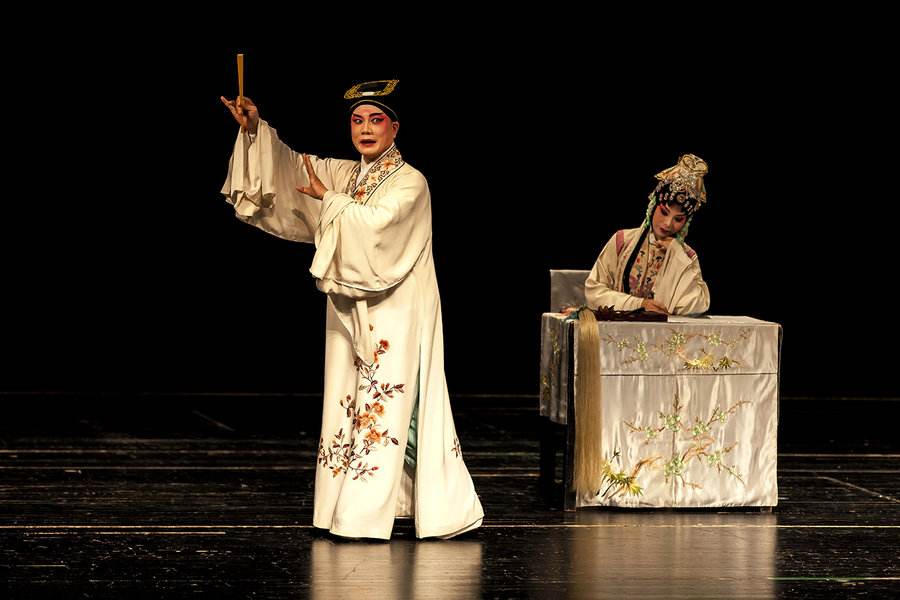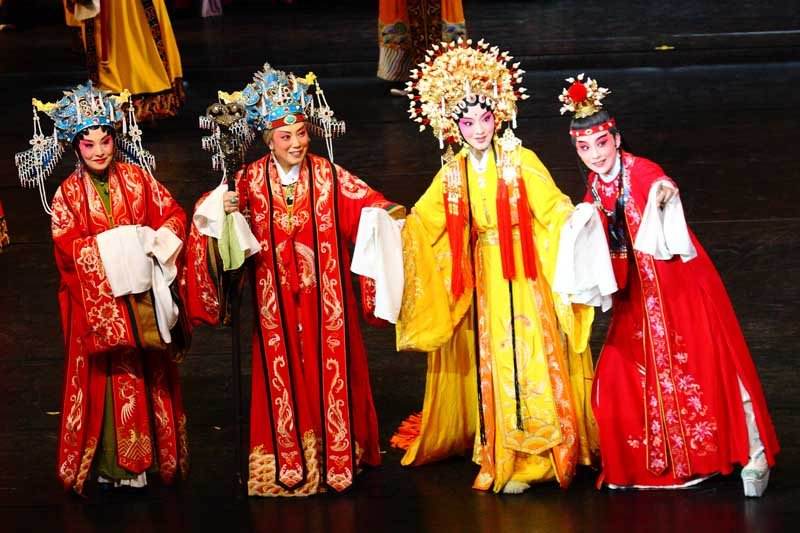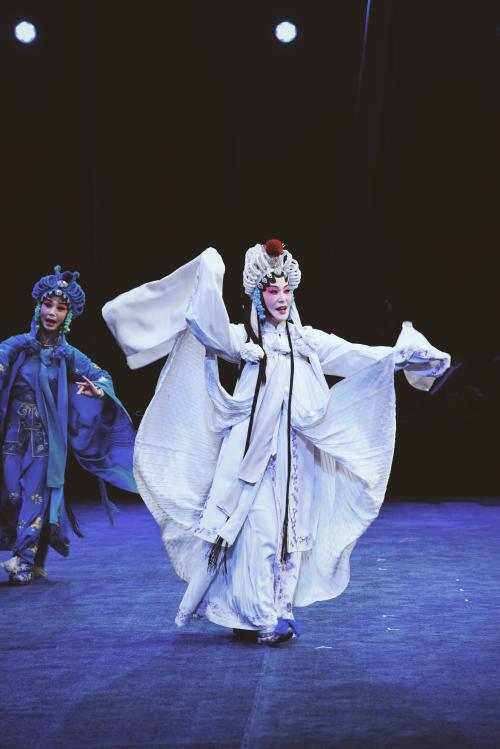Competition between Kunqu and Regional Opera
4 min readKunqu opera’s elegant and innovative style elevated it far beyond the other more unsophisticatedtheater forms of its time. Kunqu continued to thrive through the mid-Qing Dynasty as the summit o artistic expression. Regrettably, around this time Kunqu gradually started to lose its original vitality and entered a period of decline. Clearly, the great success that Kunqu opera had achieved up to this point cannot be separated from the unstinting contributions of its legions of writers and scholars.

Visionary figures such as Tang Xianzu, Li Yu, Hong Sheng, and Kong Shangren had served as the van-guard of a new wave of social consciousness. But as they receded over the horizon of history, Kunqu fell into an unprecedented slump. Mediocre writers were hard put to match the artistic level of the masters of the previous generation. Lacking in both creativity and imagination, they became increasingly rigid and formulaic in their writing, turning out a series of indistinguishable works that lacked even thesuggestion of innovative thinking. Kunqu dramatists no longer possessed any originality or acuity ofvision. They either remained mired in their narrow sensibilities or turned theater into a propaganda tool for the ruling class, preaching tired platitudes and totally alienating their audiences.
Artistically speaking, as Kunqu opera became increasingly stylized, it diverged more and more widelyfrom popular taste. The common people quickly lost patience with its overly elaborate lyrics, exces-sively protracted arias, and plodding rhythms. Early in the Qianlong reign period(1736-1795AD),a new phenomenon arose in Beijing. Audiences would arrive at a theater, but as soon as they heard the strains of Kunqu arias,a mass exodus would ensue.
Scene of grand Kunqu performance at Qingyinge
(Clear Sound Pavilion); Qing Dynasty, Qianlong reign period(1736-1795 AD) Of course, even though Kunqu was no longer popular among the masses, it still found favor with the literati and gentry. Members of these classes had formed an important audience for Kunqu opera since its inception, and served as its major patrons. However, during the Qing Dynasty new difficulties arose.
On the one hand, the Qing emperors promoted an opulent new genre of palace Kunqu opera, while on the other, they severely restricted Kunqu opera among the people.A series of strict bans were im-posed, which included prohibitions on officials maintaining private Kunqu troupes. As a result, private troupes disappeared from the scene. With the destruction of the close association of the literatiandgentry with Kunqu opera, the venerable art form lost its last and most important social base. At this point, it had nowhere to go but down.

The mid-Qing Dynasty saw the rise of various regional operas based on local vocal traditions. The un-constrained style and exuberant vitality of regional opera was in stark contrast to the decrepitude into which Kunqu opera had sunk. Its appearance heralded the arrival of a new era in Chinese performing arts. The new genre consisted primarily of small-scale folk operas, characterized by simple plot lines and extensive singing and dancing, or popular adaptations of Kunqu or other traditional dramas. Com-pared to the elegant Kunqu operas, the language of these performances was crude and chaotic, often containing glaring errors in logic and grammar. This was because most of the writers were folk artists with little education. They had no understanding of the rules of poesy, and had not systematically studied the canon of classic drama. Even so, they had something that the dramatists of the literati didnot, which was their familiarity with folk art and the language of the people. They understood the psy-chology of the popular audience, and knew how to present a drama so it would capture their attention.
Regional operas written by them were able to overthrow the elegant tradition of Kunqu opera because of their intimate connection with life and the audience, and the simplicity of their artistic expression.
The vibrant new art form superceded Kunqu precisely because it possessed the very sincerity and hon-esty that Kunqu had lost. Kunqu opera had betrayed the artistic principles of its golden age to the point of abandoning its original vision of sincerity and honesty, resulting in its inevitable decline.
During this period, Kunqu troupes implemented various reforms in an attempt to compete withre-gional operas. Rather than stage entire Kunqu operas, folk troupes’ skillfully adapted scenes or excerpts of the original works, utilizing a full range of vocal and staging techniques to enhance their produc-tions. They also added comic elements to the plots to help bridge the gap between the audience and the highly sophisticated lyrics. The outstanding performances of these folk artists conveyed the essence of human experience and philosophy contained in Kunqu, eliciting passionate responses from the audience and provoking them to consider questions of society and humanity. Over time, the addition of more detail and more vivid characterizations further enriched these works, enhancing their artistic appeal and bringing them lasting popularity.
Qing Dynasty folk artists also created a body of popular skits characterized by familiar plotlines and dynamic martial arts performances. These skits were often performed on the same program with se-lected scenes from traditional Kunqu operas. The new genre brought fresh vitality, humor, and energy to the operatic stage, and gained wide popular acclaim. Thanks to the introduction of new formats, including operatic excerpts and popular skits, Kunqu opera continued to thrive during the mid-Qing Dynasty, experiencing an artistic resurgence as the result of its competition with regional operas.

In another aspect of the interaction among operatic forms, elements of Kunqu were absorbed by the various regional operas. This contributed to the flourishing of regional genres and the emergence of Beijing opera. The new Beijing opera carried on the Kunqu tradition to a great extent, utilizing many of the Kunqu dramas and melodies, presentation of characters and stage techniques. Beijing opera suc-cessfully reformed the overly obscure language of Kunqu opera, winning the support of audiences and becoming the new dominant operatic form on the Chinese stage.








